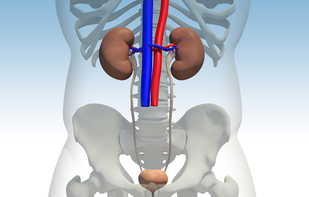SymptomsLECT2 proteins deposit in the kidneys, resulting in kidney failure and its associated symptoms. These symptoms could include swelling, dehydration, and fatigue.
DiagnosisAmyloidosis is a rare disease. The only way to currently diagnose whether or not it is present in the kidney is by performing a kidney biopsy. There are three types of amyloids, which are most commonly present in the kidney. These include light chain type (AL), serum amyloid A type (AA) and LECT2 type (ALECT2). Each of these types of amyloidosis are unique and has different causes and treatments. When amyloid is detected on a biopsy, it is extremely important to determine the type of amyloid present.
|
What is a Biopsy?Doctors perform kidney biopsies by inserting a thin needle through the skin and into the kidney. This procedure involves a doctor removing a small piece of kidney for further examination. An ultrasound probe will be used to guide the needle.
For more information on Kidney Biopsies, visit the following page from the National Kidney Foundation. |

